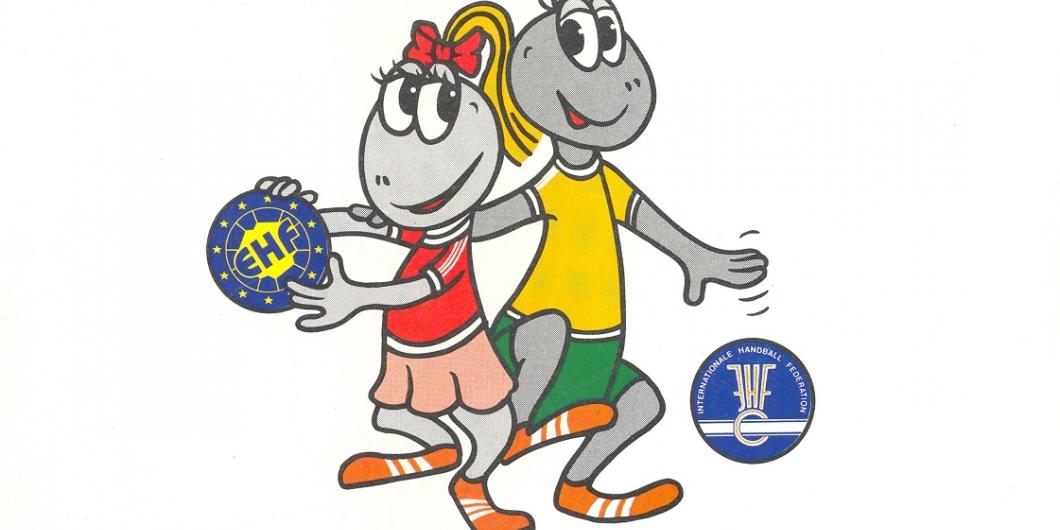Max and Josy love playing handball, and Max and Josy became famous in 1994.
They were the mascots of the first technical project of the European Handball Federation EHF: Mini Handball.
After several national federations had launched initiatives to make handball more attractive for children, an EHF working group was formed and a European wide project was launched. On 1 October 1994 the European Day of Mini Handball was celebrated across the continent.
Members of the working group included Karin Nilsson Green (SWE), Claude Rinck (FRA), Hans Sollberger (SUI), Uli Tschäppeler (SUI), Hans Peter Oppermann (GER), Carlos Garcia (POR) and Helmut Höritsch (EHF Office).
Since then, the concept of mini handball has been part of all coaches’ courses from the lowest to the highest level. And the drawings of the famous Ralf Ettl, who worked for Hollywood cartoon producers Hannah Barbera, became the key to success: the Mini Winnies, including Max and Josy.
The general philosophy of mini handball is based on fun, fair play and experiences – and became a method of teaching handball to an age group from six to eleven years.
“All Mini Handball lecturer material is based on the three platforms “me and the ball”, “with each other” and “against others”, says Helmut Höritsch, the EHF's Senior Manager responsible for education and development and one of the 'fathers' of the mini handball project.
Several new editions of videos (available on Youtube), brochures and online-based teaching material were produced to spread the word of mini handball.
“The general concept was implemented in Switzerland, but it has been adapted to fulfil the needs of making handball more attractive for kids everywhere”, says Höritsch.
In cooperation with the International Handball Federation, the European Mini Handball project became a global success. Later-on, follow-up projects such as Handball@School or
Street handball (Goalcha) was launched, based on the principles of mini handball.
All three key platforms of mini handball have several training and teaching sections, easy-to-learn units for kids in schools or clubs.
The game of mini handball includes four to five court players and a goalkeeper on each side (later on, street handball was only played with one goal to need less material). The rules of the game were simplified compared to regular handball – and everything was based upon fair play among players and towards the referee.
“Mini handball is a perfect tool to get physical education teachers – and thus their pupils – involved in handball. Still, this project is in a process of constant improvement. And mini handball was the general basis for EHF projects such as the whole development of beach handball," says Höritsch.


